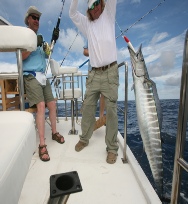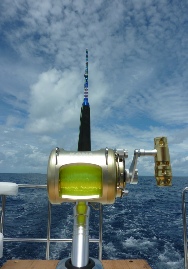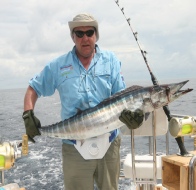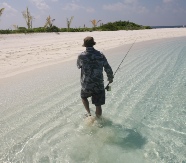© 2014 Gary Smith Fishing Ltd All Rights Reserved










Proudly Associated With


Welcome to this feature that will concentrate on the various aspects of shore fishing from the wonderful coastline in southern Spain. I have come from being a complete novice regarding fishing the clear waters of the Mediterranean to being the first non Spaniard to competitively fish in local and regional competitions as part of the Club De Pesca Puerto De Mazarron Surfcasting Team.
Whether I am in competitions or just practicing many people come and talk and always the same question seems to be asked, “What do I do to catch fish here?” usually followed by a recollection of how they have tried for hours and not had a bite. I ask what tackle they are using and again the same answers are given time and time again, big hooks, big bait, and thick line. This water for the most part is clear, it has not got the tidal influences of the North Sea or Atlantic, so you are in effect fishing the margins of a giant lake and this is why the equipment you use is so important.
Whether I am in competitions or just practicing many people come and talk and always the same question seems to be asked, “What do I do to catch fish here?” usually followed by a recollection of how they have tried for hours and not had a bite. I ask what tackle they are using and again the same answers are given time and time again, big hooks, big bait, and thick line. This water for the most part is clear, it has not got the tidal influences of the North Sea or Atlantic, so you are in effect fishing the margins of a giant lake and this is why the equipment you use is so important.
First of all you will need a Licencia De Pesca Maritima De Recreo. This is a five-year shore fishing licence issued by Consejeria de Agricultura, Aqua y Medio Ambiente for whichever region you live in, my licence is issued by Region De Murcia and covers me for fishing in Murcia, Valencia and Almeria regions. With your licence you will also receive a rulebook of shore angling with very importantly minimum lengths of fish, which can be kept for the pan - very important if we are going to preserve nature. You will need two passport photo’s and a photocopy of your N.I.E or Residents card together with the appropriate fee, around 12.00€. Not bad value at all, better than the 90.00€ fine you could incur without one and I have had mine checked three times this year.
Ok and now to catch fish which after all is what angling is all about. We can cover the best locations, best tackle, power casting, and spinning etc later. To start with a decent telescopic rod will suffice, around 4.20 to 4.50 metre in length and rated action of 150 to 275 grs. A reasonable named brand fixed spool reel to compliment the rod will be good enough for all round shore work. The tackle shops are full of rod and reel combo’s for around 60.00€ to 100.00€ usually with some line thrown in. I know there are much cheaper outfits available but it rarely pays off, I have been down that road and it has always ended in tears with a broken rod through getting snagged or just not being up to the job. Remember this is fishing for enjoyment. Your main line needs to be between 0.35mm and .050mm thickness, the thinner it is the easier it will come of the reel on casting. Load the spool on your reel with around 200 metres of line and attach a swivel to the end using a simple half blood knot. For the terminal tackle I would suggest a simple two hook paternoster, 0.50 main line 1.20 metres in length and two number 10 hooks leading from this, one at 20 centimetres from the top and one 20 centimetres from the bottom connected by swivels and 20centimetres to 30 centimetres in hook length, these can be bought ready made up without the hook lengths attached and if you are a beginner this maybe the best option. Also buy the hooks with the line already attached and cut to the length required. A 100-gram weight attached to the bottom by a covered clip will serve to reduce tangles on casting. This may all sound mind boggling and in future knots and tackle can be explained further but to start with simple is best.
Now you need some bait to attract your elusive quarry. For starters go to a tackle shop and ask for Coreano worms, these are the cheapest and easiest to use, you get enough for a four-hour session in a box. They are similar to small rag worm but they do bite with two black prongs coming out from the head so beware! You will need a baiting needle also to load them onto your hooks.
You now need to find a place to fish, don’t just stop at the first place you come across, look for other fishermen it is likely if they are there it is because there are fish around. Dawn and dusk are the good times to fish with the night being best but to start with find a good sandy beach with clear water, no dark patches of rock and weed as this will only snag your tackle. Put your rod rest in the ground and get set up, put the needle through the worm from head to tail and put the hollow needle to the hook end so it sits inside, slide the worm onto the hook and line leaving a little hook showing, repeat for the second hook then cast out as far as you can. Make sure for safety that no one is in the vicinity when you cast, as a weight travelling at speed is lethal. Side casting is banned in competition angling in Spain because of this danger.
Tighten your line after casting and wait for the evidence of a bite, if nothing has happened after ten minutes reel in five turns and re tighten your line, this will attract any fish around to the movement of the weight in the sand and hopefully your bait. If after thirty minutes you have had no luck bring the line in and reload. When you do catch bring the line in slowly but evenly and slide the fish in over the sand once out of the water as it is so easy to lose a fish at this stage when it jumps the hook.
I hope this information and advice has been of some use to you.
Back
| Address |
| Contact Us |
